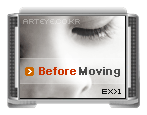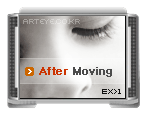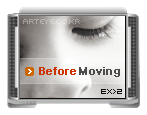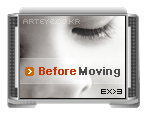| |
 |
|
|
|
|
| You can use this kind of lens when
you have no abnormalities with the eyeball structure and have
simple white coating, leukoma, nebula, or faint turbidity on
the cornea. It can cover the exposed area of your concern. |
 It
feels comfortable to wear, it causes no foreign substances including
eye mucus, and it is light and good at moving. It
feels comfortable to wear, it causes no foreign substances including
eye mucus, and it is light and good at moving. |
| You can use this artificial
eye when your kid has one eye removed due to retinoblastoma
or lost eyesight on one of the eyes, which accordingly does
not grow in proportion with the other normal eye due to congenital
microphthelmia or other causes. Since your kid is in the stage
of physical growth, you need to increase the eye socket of the
artificial eye on a regular basis(six months to 12 months) and
change the size of the eye according to the growing bone structure. |
| A light artificial eye has a vacuum
inside. It's lighter than a general artificial eye by 50% up
to 70%. Its specific gravity is much lower than that of water.
In addition, it can resolve the objection of the eye due to
its weight and reduce the sagging of the lower eyelid, which
phenomena usually take place with a general artificial eye. |
 Developed
by Pyeonghwa Research Institute of Artificial Eyes, the light
artificial eyes have a patent for their manufacturing method
for human use purposes. Developed
by Pyeonghwa Research Institute of Artificial Eyes, the light
artificial eyes have a patent for their manufacturing method
for human use purposes. |
| You can use this type of artificial
eyes when you have your cornea contracted or fail to form the
desired curvature because of an injury. |
 It
covers the corneoscleral part by a thin layer and is able to
turn freely along the eyeball. It
covers the corneoscleral part by a thin layer and is able to
turn freely along the eyeball.
 The protrusion
helps the upper and lower eyelid sink and thus become invisible. The protrusion
helps the upper and lower eyelid sink and thus become invisible. |
 ------------- -------------
 ------------- ------------- |
 -------------- -------------- |
|
|
 |
 |
|
 |
|
|
|

